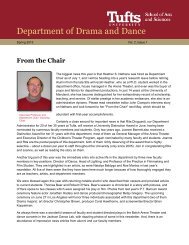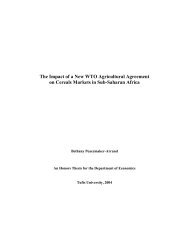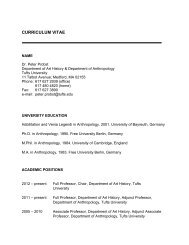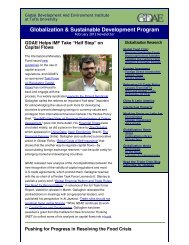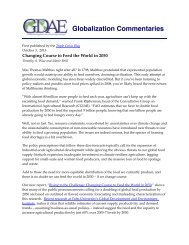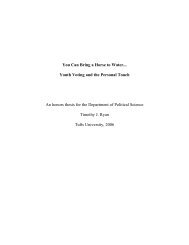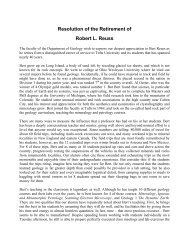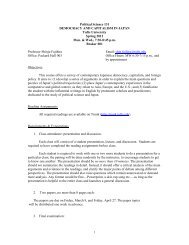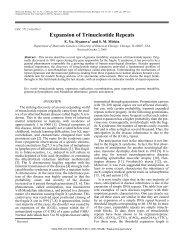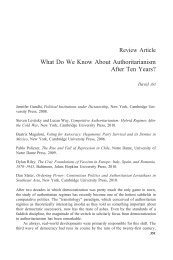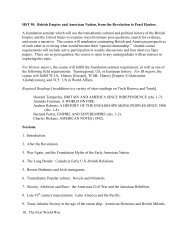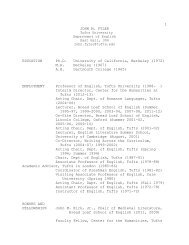MARKETS WITH MARKET POWER - Tufts University
MARKETS WITH MARKET POWER - Tufts University
MARKETS WITH MARKET POWER - Tufts University
Create successful ePaper yourself
Turn your PDF publications into a flip-book with our unique Google optimized e-Paper software.
Quantity of Output<br />
(Demanded)<br />
Selling Price<br />
($)<br />
Total Revenue<br />
($)<br />
Marginal Revenue<br />
($)<br />
1 17 17 17<br />
2 14 28 11<br />
3 11 33 5<br />
4 8 32 -1<br />
5 5 25 -7<br />
c) The selling price of $8 cannot be profit maximizing because the marginal revenue is<br />
negative – Braeburn decreases its revenue by producing and selling the fourth book.<br />
d) See the graph above for the horizontal marginal cost curve.<br />
e) Profit maximization occurs where marginal revenue equals marginal cost. In the graph<br />
above, this occurs at a production level of three books and a price of $11.<br />
f) At a price of $8, Braeburn would sell four books for a total revenue of $32. Total cost<br />
would be $20 (4*$5) and profits would be $12. At the profit maximizing price of $11,<br />
Braeburn’s revenues are $33, their costs are $15, and their profits are $18.<br />
2. a) Firm 1 will make high (additional) profit; Firm 2 will make no (additional) profit--as<br />
shown in the upper right cell in the payoff matrix.<br />
b) The worst that can happen to Firm 1 if it opens a new outlet is that it could make moderate<br />
profit. If it doesn’t open one, the worst that can happen is that it could make no profit. So it<br />
will open the new outlet.<br />
c) The outcome will be that each firm will open a new outlet. The end result will be that each<br />
firm will make a moderate profit.<br />
d) This situation is not like the prisoner’s dilemma because the firms could not both clearly<br />
achieve a better outcome through cooperation.<br />
e) Given the potential to open outlets in multiple towns, the firms do have potential gains<br />
through collusion. Suppose there are two potential towns. If both firms open an outlet in<br />
each town, each firm will make only a moderate profit in each town. However, if one firm<br />
opens an exclusive outlet in one town and the other firm opens an exclusive outlet in the<br />
other town, each firm would make a high profit. Thus (if “high” is greater than two<br />
“moderates”) an agreement that gives each firm exclusive access to each town has the<br />
potential to benefit both firms.<br />
3. The correct matches are a-2, b-5, c-1, d-7, e-4, f-6, g-3.<br />
Extensions<br />
1. Discussion of “Competition and Concentration” (suitable for lecture preparation or handout).<br />
(1 page)<br />
2. Extra numerical example of Monopoly. NOTE: Table 1 refers only to material covered in the<br />
text, but uses the notation “Δ” for “change in.” Table 2 includes material (average variable costs<br />
and average total costs) covered in the appendix, and also includes average fixed costs (not<br />
Chapter 12 − Markets with Power 9




